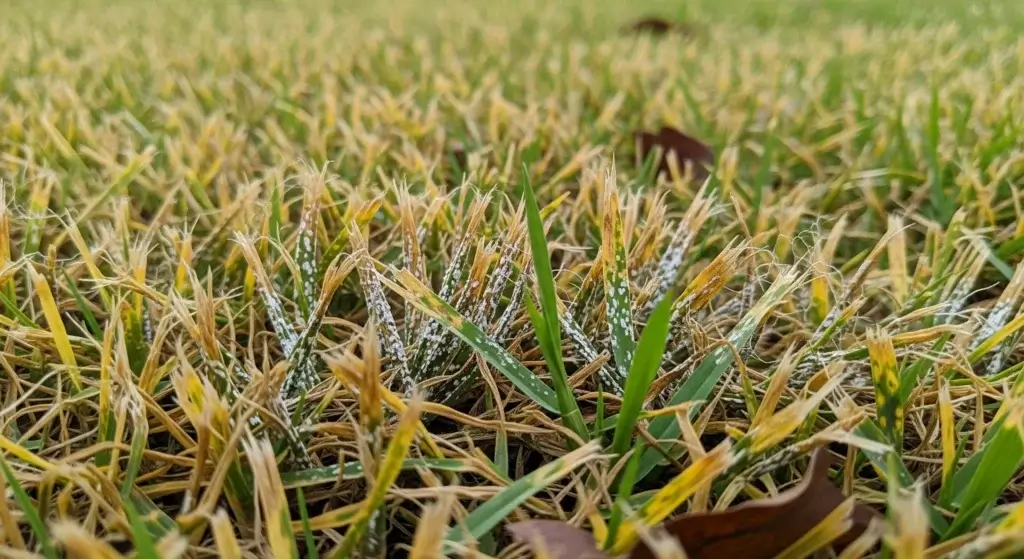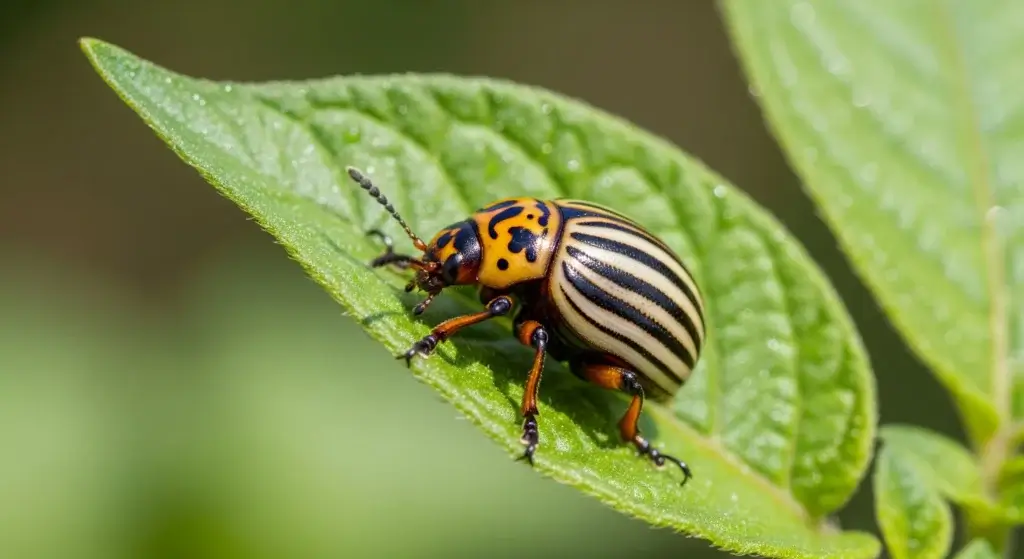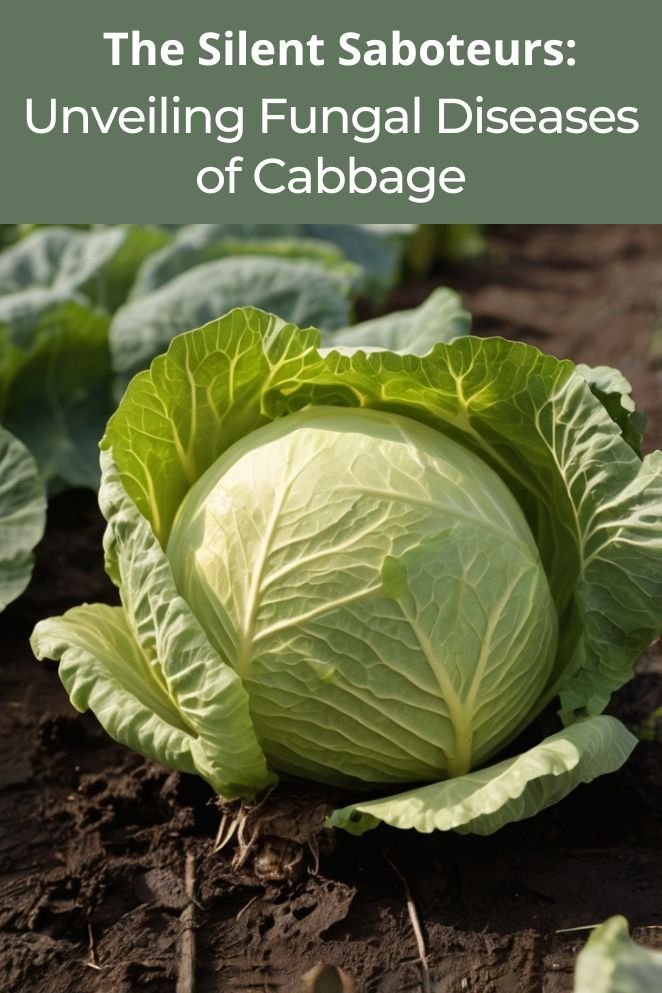
Did you know that cabbage, the delicious and versatile vegetable we all enjoy, belongs to a large family of over 400 cruciferous vegetables?
These cool-season crops, including favorites like broccoli and cauliflower, are staples in many kitchens.
Cabbage is grown for its dense, leafy heads, which can be green, red, or purple.
Whether eaten raw or cooked in a variety of dishes, cabbage is a nutritious addition to any meal.
However, it can sometimes be affected by fungal diseases.
But don’t worry, fellow gardeners!
With a bit of knowledge, we can prevent these diseases and keep our cabbage patches thriving.
Fungal Diseases of Cabbage Plant
Wirestem disease
Wirestem, caused by the fungus Rhizoctonia solani, is a common issue for cabbage plants and other cruciferous vegetables like broccoli, cauliflower, and Brussels sprouts.
This disease gets its name from the damage it causes to the stem at the soil line, making it shrivel and look thin and wire-like.
Wirestem creates dark lesions of varying depth and length on the hypocotyl (the seedling stem) at or just above the soil line, often extending down to the root.
As the disease progresses, the stem at the lesion site constricts and thins, resembling a wire.
Secondary symptoms include wilting, stunting, and a bluish color on the youngest leaves.
Wirestem thrives in cool, wet weather and damp environments. Poorly draining soil can create persistently moist conditions, perfect for fungal growth.
- Read also: Beat the Blight: Identifying Fungal Diseases of Eggplant
- Read also: Fungal Diseases of Beans: Identification, Prevention, and Control
Fusarium yellows disease
Fusarium yellows, also called Fusarium wilt, is a major fungal disease that affects cabbage plants.
It is caused by the soilborne fungus Fusarium oxysporum f. sp. conglutinans, which attacks the plant’s vascular system, cutting off its supply of water and nutrients.
One of the first signs of this disease is one-sided wilting, where leaves on just one side of the plant start to wilt and lose color.
As the disease gets worse, these wilted leaves turn yellow, beginning with the lower leaves and moving upward.
If you cut through the stem or the base of the leaf petiole, you might see a brown or discolored vascular system, indicating where the fungus is blocking water flow.
The plant’s overall health will decline, and it may look underdeveloped and struggle to produce a full head of cabbage.
The fungus can survive in the soil for many years, even without any host plants, which makes traditional control methods like crop rotation and sanitation less effective.
The disease is worse in warm temperatures and less common in cooler temperatures.
Blackleg disease
Blackleg is a serious fungal disease caused by Leptosphaeria maculans (also known as Phoma lingam) that can devastate your cabbage patch.
This fungus targets the stem of cabbage plants, weakening them and eventually causing death.
Early signs include dark brown, sunken areas on the stem near the soil line, often bordered by a purplish or black edge. Infected plants typically appear stunted and struggle to grow.
As these cankers expand, they girdle the stem, cutting off the flow of water and nutrients, leading to wilting and, ultimately, plant death.
Sometimes, blackleg also causes small, light brown spots with dark centers to form on the leaves.
The fungus thrives in heavy rain and cool temperatures. Infected plant debris left in the garden over winter allows the fungus to survive and spread in the next growing season.
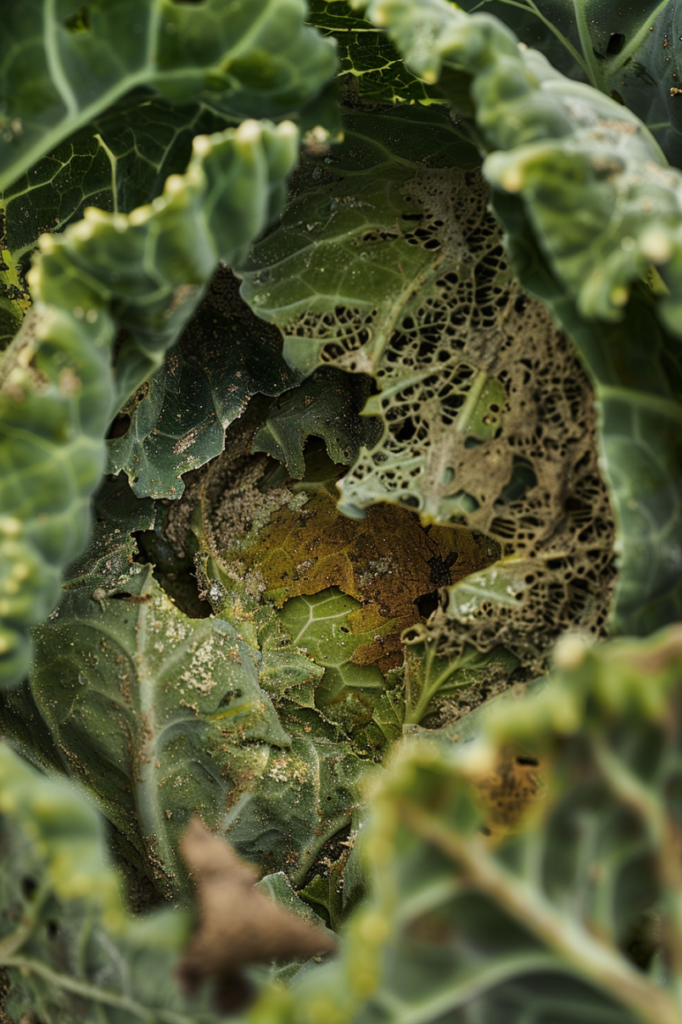
Leaf spot disease
This widespread disease, caused by the fungus Alternaria brassicicola, is notorious for its distinctive “target spots.”
These begin as small, dark yellow spots that expand into circular lesions with brown centers and concentric rings.
As the disease progresses, these spots may merge, leading to significant yellowing and leaf drop.
The fungus thrives in warm, humid weather, so it’s crucial to be extra vigilant during hot and muggy periods.
Leaf spot diseases are a common issue for cabbage growers, causing unsightly blemishes and potentially reducing yields.
Clubroot disease
Clubroot is caused by the soilborne protist Plasmodiophora brassicae.
The aboveground symptoms might not show up until several weeks after the infection.
Early signs usually include wilting and stunting of the cabbage plant.
The leaves may turn yellow, and the plant may grow more slowly than healthy cabbage plants.
The most telling symptom of clubroot is the swollen, distorted roots that develop a club-like appearance, which is how the disease got its name.
Clubroot spores can survive in the soil for up to seven years without a host plant.
These spores can spread through contaminated transplants, farm equipment, irrigation water, and runoff water.
Damping off disease
Damping-off is a common fungal disease that affects young cabbage seedlings, particularly those started indoors.
It’s caused by various fungi like Pythium, Rhizoctonia, and Fusarium, which thrive in cool, moist environments.
This disease can cause seeds to rot before they germinate or develop discolorations.
The stem at or near the soil line becomes sunken and discolored, often looking thin and wiry, a condition known as wire stem.
Seedlings then topple over and die because of their weakened stems. The lower leaves wilt, decay, and turn black.
Damping-off diseases flourish in cool temperatures, high humidity, and poorly drained soil. Seedlings in constantly wet conditions are especially vulnerable.
Downy mildew disease
Downy mildew is a destructive fungal disease caused by the Oomycete hyaloperonospora parasitica.
Downy mildew causes a grayish-white, fuzzy or downy growth on the undersides of leaves.
This is where the fungal spores are produced.
On the upper surface of the leaves, corresponding to the fungal growth underneath, you’ll see yellow or light green patches or spots.
These areas may become angular and necrotic (dead tissue) over time.
Severely infected cabbage plants may be stunted and develop poorly.
In advanced stages, the downy mildew can infect the heads of cabbage or curds of cauliflower and broccoli, causing discoloration and reducing quality.
Downy mildew thrives in cool temperatures and humid conditions with frequent leaf moisture.
Densely planted cabbages that block airflow create a favorable environment for fungal growth.
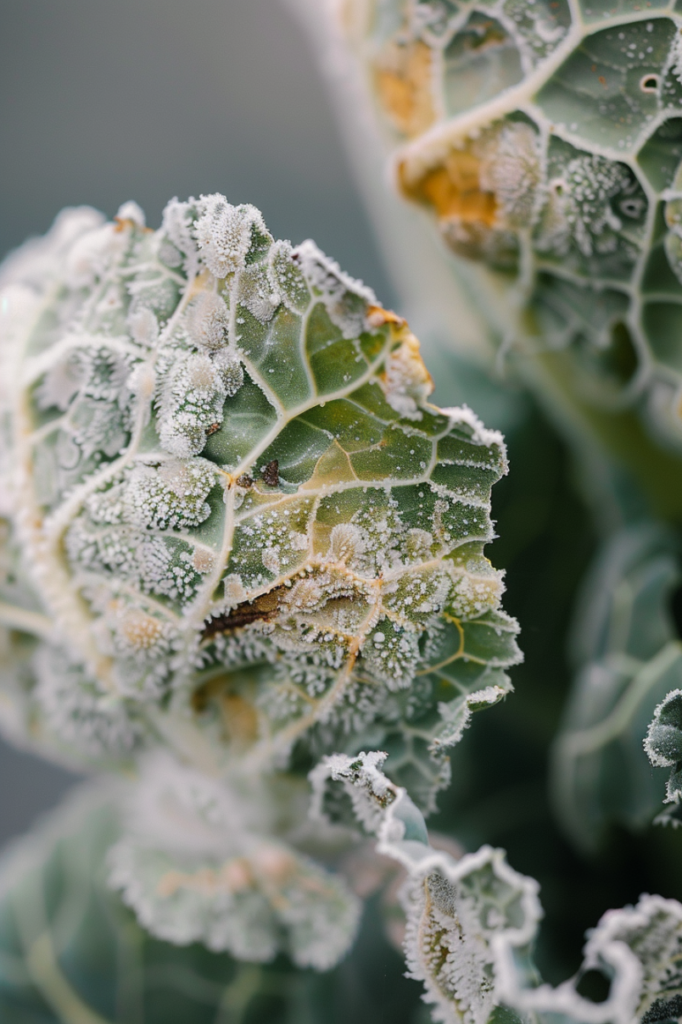
Powdery mildew disease
Powdery mildew, caused by Erysiphe cruciferarum, gives plants an unsightly appearance.
The most noticeable sign is white to grayish powdery patches on the leaves, stems, or even flower buds. This powdery growth is the fungus itself.
In severe cases, infected cabbage plants may become stunted and show poor growth.
Powdery mildew can cause leaves to curl, become distorted, and yellow around the infected areas.
Unlike downy mildew, powdery mildew thrives in warm (around 70-80°F) and dry conditions with poor air circulation.
Densely planted cabbage plants that block airflow create ideal conditions for this fungal growth.
White blister disease
White blister on cabbage plants is caused by a fungus-like organism called Albugo candida, which is closely related to the organisms responsible for downy mildew diseases.
The most distinctive sign of white blister is the appearance of white, raised blisters on the undersides of leaves.
These blisters burst and release powdery white spores.
On the upper surface of the leaves, corresponding to the blisters underneath, you will see yellow or light green patches.
Severely infected cabbage plants may become stunted and grow poorly. In some cases, the infection can spread to the stems, flower buds, or pods.
White blister thrives in cool temperatures and humid conditions with frequent leaf moisture.
The spores are easily spread by wind and rain splash, promoting infection.
Ring spot disease
Ring spot, a significant disease affecting cabbage plants, is caused by a fungus known as Mycosphaerella brassicicola.
It poses a particular challenge in regions with intensive vegetable farming and overlapping crop plantings.
The most recognizable sign of ring spot is the appearance of circular brown-grey spots on the leaves, often with a yellow border.
These spots may be confined by leaf veins, giving them an angular shape rather than a perfect circle.
As the disease progresses, small black fruiting bodies containing spores form in concentric circles within the center of the spots, hence the name “ring spot.”
This disease can impact all parts of the plant above ground.
While young seedlings can be affected, mature plants typically display more severe symptoms.
Numerous spots may merge, leading to yellowing and premature death of leaves.
In stored cabbage heads, ring spot lesions can develop and penetrate deeply, reducing shelf life and marketability.
Ring spot fungal spores thrive in cool and humid conditions with frequent leaf moisture.
They can spread through wind, water splashes, and even contaminated crop debris or compost made from infected plants.
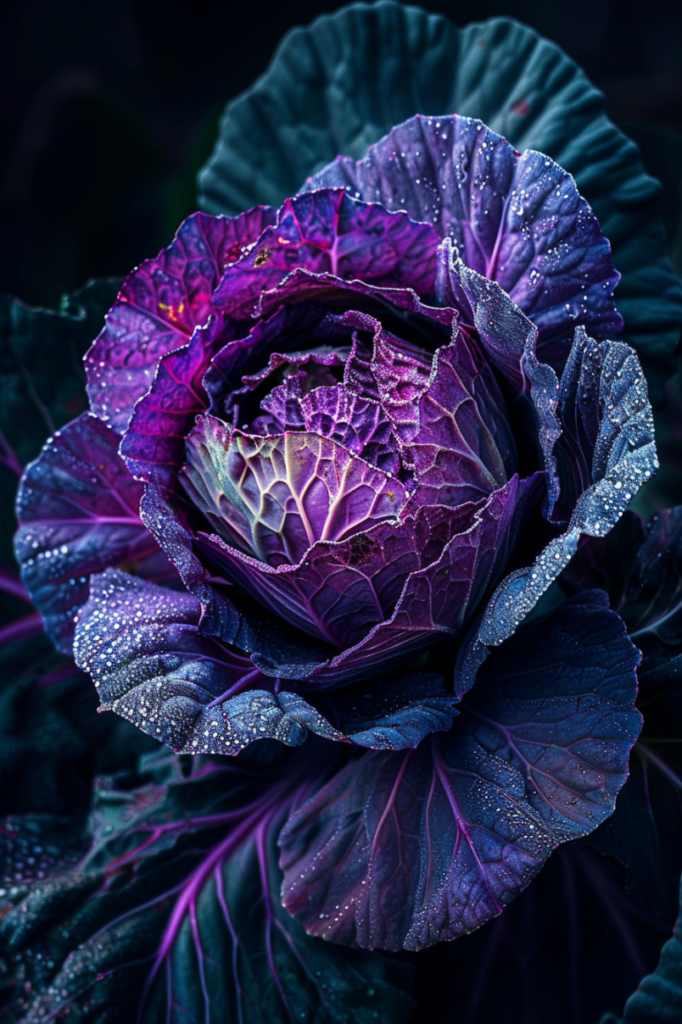
White mold disease
White mold, caused by the fungus Sclerotinia sclerotiorum, is a common issue for cabbage plants.
It can infect various parts of the plant, often starting at the stem base, on leaves touching the soil, or even on the cabbage head itself.
The first sign is the appearance of tan, water-soaked circular areas on leaves or stems where the fungus has taken hold.
These spots quickly become covered in white, fluffy fungal growth, resembling cotton wool, hence the name “white mold.”
As the fungus spreads, it makes the plant tissue soft and watery.
As the infection progresses, the fungus forms hard, resting structures called sclerotia within the infected plant tissue.
These sclerotia can remain in the soil for years, serving as the main method for the fungus to survive and spread.
Any damage to the cabbage plant, such as insect feeding or mechanical injuries during harvest, can create openings for fungal infection.
White mold spores are most likely to germinate and infect plants in cool and humid conditions.
Dense planting that limits air circulation and raises humidity levels provides an ideal environment for fungal growth.
Bottom rot disease
Bottom rot in cabbage plants is a troublesome fungal disease caused by a soil borne fungus known as Rhizoctonia solani.
The first indication is often the appearance of tan or brown, sunken lesions on the outer leaves close to the base of the plant, where they meet the soil.
As time goes on, these lesions can expand and merge, eventually reaching the stem.
The fungus can infect the stem, causing it to become sunken and discolored.
This weakens the plant, potentially leading to wilting or tipping over.
In severe cases, the fungus may invade the developing cabbage head, resulting in internal rotting and rendering it unfit for sale.
Rhizoctonia solani thrives in damp or waterlogged soil conditions. Excessive watering or poor drainage can exacerbate the issue.
While the fungus can survive across a range of temperatures, cooler weather is particularly conducive to disease development.
While mulching can help retain moisture, it’s important to avoid using thick organic mulch directly in contact with the cabbage stem, as this can create ideal conditions for fungal growth.
Phytophthora root rot disease
Phytophthora root rot, caused by various Phytophthora species such as Phytophthora megasperma, is not a true fungus but an oomycete.
One of the initial signs you might observe is the wilting of cabbage plants, especially noticeable during the day and with some recovery overnight, particularly if night temperatures are cool.
This wilting occurs because the damaged root system is unable to absorb sufficient water.
Leaves, particularly older ones at the lower part of the plant, may turn yellow, become stunted, and die prematurely.
Upon examining the roots, you are likely to find discoloration. They may appear brown, rotted, and stunted compared to healthy white roots.
Phytophthora thrives in waterlogged or poorly drained soil conditions.
Excessive rainfall, overwatering, or heavy clay soils can exacerbate the problem.
Phytophthora can endure across a range of temperatures, but cooler soil temperatures are particularly conducive to disease development.

- Read also: Cucumber Killers: Common Fungal Diseases of Cucumber
- Read also: Beat the Blight: Common Fungal Diseases of Tomatoes
Conclusion
So there you have it, fellow cabbage crusaders. It’s evident that various fungal afflictions pose significant challenges to cabbage plants.
Each disease presents its own set of symptoms and characteristics, but they all share a common theme of causing harm to the plant’s health and productivity.
From damping-off and downy mildew to white mold and ring spot, these fungal diseases can lead to wilting, stunted growth, discoloration, and even plant death.
Timely identification and treatment of fungal infections are crucial for minimizing damage and preserving cabbage crop yields.
FAQs
Fungal diseases in cabbage plants can be identified by various symptoms such as wilting, yellowing of leaves, development of lesions or spots, and the presence of powdery or fluffy growth on leaves or stems.
Fungal diseases in cabbage plants thrive in cool and humid conditions, with frequent leaf moisture. Poor soil drainage, waterlogged conditions, and excessive rainfall can also contribute to fungal growth.
Untreated fungal diseases can lead to wilting, stunted growth, premature death of leaves, reduced crop yield, and even total loss of the cabbage crop.
Fungal spores can survive in the soil for varying durations depending on the specific fungal species and environmental conditions, ranging from several months to several years.

